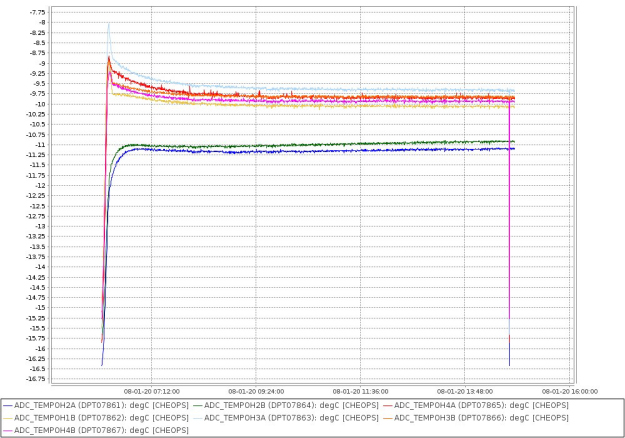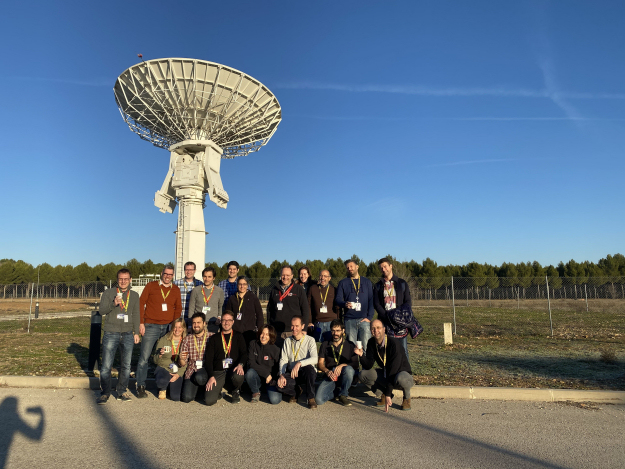Switching on the CHEOPS instrument
10 January 2020
The science instrument on ESA's Characterising Exoplanet Satellite, CHEOPS, was successfully activated on 8 January, marking the beginning of the mission's in-orbit commissioning.Following the successful launch of CHEOPS on 18 December 2019 and the subsequent Launch and Early Orbit Phase (LEOP) activities, which were flawlessly completed on 22 December, the mission started its in-orbit commissioning on 8 January 2020.
 |
 |
| Switching on the CHEOPS instrument. Credit: University of Bern | CHEOPS instrument and control teams. Credit: INTA/Airbus |
This important phase of the CHEOPS mission begun with initial tests on the exoplanet watcher's science instrument – a high-precision photometer equipped with a 300-mm aperture telescope and a charge-coupled device (CCD). The instrument was switched on for the first time, running the very first health checks, to which the instrument has responded promptly. All the performed tests were fully successful, proving that the control units are operating as planned and that the expected thermal conditions can be reached.
 |
| CHEOPS first dark image. Credit: University of Bern |
On 9 January, with the telescope cover still closed, the instrument was used to obtain the first 'dark image' – an image produced without receiving any light from external sources – to demonstrate that it is performing as expected.
Further tests on the satellite and instrument will continue over the coming weeks, and eventually the telescope cover will be opened by the end of January – a key milestone after which the instrument can be used to take its first images of the sky.
More information about CHEOPS
CHEOPS is an ESA mission implemented in partnership with Switzerland, with important contributions from Austria, Belgium, France, Germany, Hungary, Italy, Portugal, Spain, Sweden, and the United Kingdom.
ESA is the CHEOPS mission architect, responsible for procurement and testing of the satellite, launch, the launch and early operations phase, in-orbit commissioning, as well as the Guest Observers' Programme. The prime contractor for the design and construction of the spacecraft is Airbus Defence and Space in Spain. The consortium of 11 ESA Member States led by Switzerland provided essential elements of the mission.
CHEOPS is a Small, or S-class, mission in ESA's science programme. S-class missions have a much smaller budget than Large- and Medium-class missions, and a much shorter time from project start to launch. These conditions have made it necessary to use technologies that have already been tried and tested in space, and a number of tasks traditionally undertaken by ESA, such as operations, will be done by the Consortium. The CHEOPS mission consortium runs the Mission Operations Centre located at INTA, in Torrejón de Ardoz, Spain, and the Science Operations Centre, located at the University of Geneva, Switzerland.
Eighty percent of the science observing time on CHEOPS is dedicated to the Guaranteed Time Observing programme, defined by the CHEOPS Science Team. The remaining 20% is made available to the astronomical community in the form of an ESA-run Guest Observers' programme, with proposals selected via a competitive peer-review selection process.



